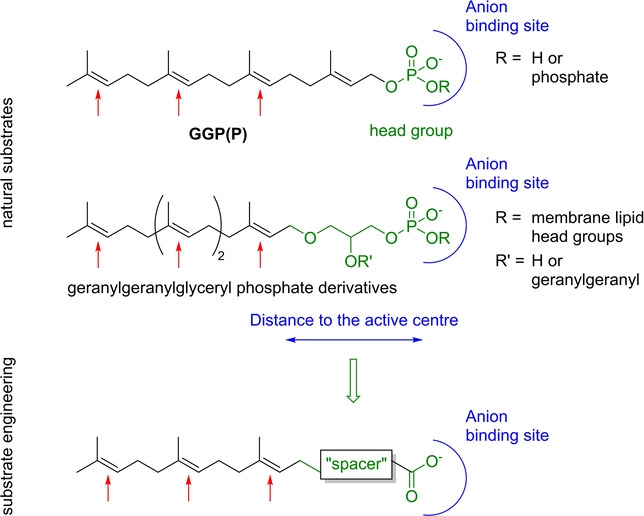Enzymatic Asymmetric Reduction of Unfunctionalized C=C Bonds with Archaeal Geranylgeranyl Reductases

The asymmetric reduction of activated C=C bonds such as enones is well established for non-enzymatic methods as well as in biocatalysis. However, the asymmetric reduction of unfunctionalized C=C bonds is mainly performed with transition metal catalysts whereas biocatalytic approaches are lacking. We have tested two FAD-dependent archaeal geranylgeranyl reductases (GGR) for the asymmetric reduction of isolated C=C bonds. The reduction of up to four double bonds in terpene chains with different chain lengths and head groups was confirmed. Methyl-branched E-alkenes were chemoselectively reduced in the presence of cyclic, terminal or activated alkenes. Using a removable succinate "spacer", farnesol and geraniol could be quantitatively reduced (>99 %). The reduction is strictly (R)-selective (enantiomeric excess >99 %). Hence, GGRs are promising biocatalysts for the asymmetric reduction of unactivated isolated C=C bonds, opening new opportunities for the synthesis of enantiopure branched alkyl chains.
Publisher URL: https://chemistry-europe.onlinelibrary.wiley.com/doi/10.1002/cbic.202100290
Open URL: https://doi.org/10.1002/cbic.202100290
DOI: 10.1002/cbic.202100290
Keeping up-to-date with research can feel impossible, with papers being published faster than you'll ever be able to read them. That's where Researcher comes in: we're simplifying discovery and making important discussions happen. With over 19,000 sources, including peer-reviewed journals, preprints, blogs, universities, podcasts and Live events across 10 research areas, you'll never miss what's important to you. It's like social media, but better. Oh, and we should mention - it's free.
Researcher displays publicly available abstracts and doesn’t host any full article content. If the content is open access, we will direct clicks from the abstracts to the publisher website and display the PDF copy on our platform. Clicks to view the full text will be directed to the publisher website, where only users with subscriptions or access through their institution are able to view the full article.


